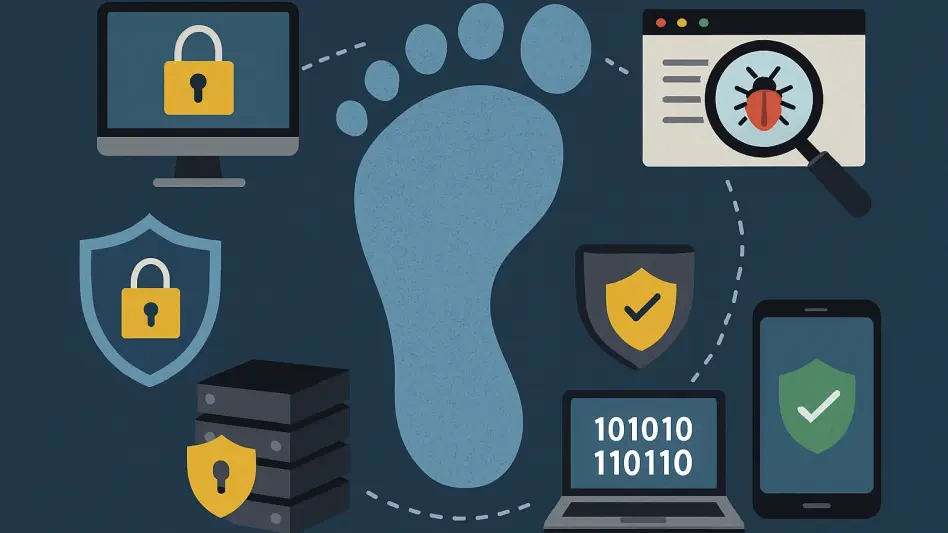In the first quarter of the year, Oman saw a significant increase in cyber fraud cases, climbing by 35% compared to the same period last year. This data, released by the Royal Oman Police (ROP), paints a concerning picture of a society grappling with the complexities of digital security. Brigadier Jamal Habib al Quraishi highlighted the growing vulnerabilities stemming from the increased integration of digital platforms in everyday life. These vulnerabilities offer new avenues for fraudsters who exploit both technical weaknesses within systems and a general lack of cybersecurity awareness among users.
The Growing Digital Threat Landscape
Exploiting Digital Weaknesses
As the digital landscape expands rapidly, it inadvertently provides fertile ground for cybercriminals. Fraudsters often exploit technical loopholes and the inherent complexity of digital systems. This is compounded by users’ frequent lack of awareness regarding cybersecurity practices, creating an environment ripe for exploitation. The proliferation of accessible technology has outpaced the public’s understanding of securing digital transactions and communications, leading to increased vulnerability. Often cybercriminals utilize sophisticated methods to mimic legitimate processes, duping unsuspecting individuals or organizations into revealing sensitive information or conducting fraudulent transactions.
Further complicating the scenario is the widespread use of digital platforms for a variety of activities, from financial transactions to social interactions. This digital transition necessitates an urgent need for robust cybersecurity literacy, enabling individuals and institutions to recognize warning signs and prevent potential attacks. However, a significant gap remains between the technological advancements and users’ preparedness to defend against cyber threats. Bridging this gap requires intensive educational campaigns and a concerted effort by stakeholders to integrate cybersecurity training into everyday practices.
Common Cyber Frauds
A prevalent aspect of the cyber fraud surge includes scams that mimic legitimate websites, thereby tricking individuals into providing personal information. This technique, known as website spoofing, is often used to collect sensitive data, such as bank details or login credentials. Another common scheme involves job scams, which often include elements of international money laundering. In these cases, victims are deceived into transferring illicit funds, believing they are part of lucrative employment opportunities.
Phone scams also remain a significant concern. Fraudsters impersonate influential figures or institutions, generating pressure on victims to act impulsively, often for financial gain. Additionally, phishing scams disseminated through text messages or platforms like WhatsApp exploit unsuspecting users by masquerading as legitimate communications seeking personal data. The lure of high returns from cryptocurrency investments continues to attract victims despite repeated warnings. These scams promise profitable returns from digital currency trading but often result in substantial losses for the unsuspecting.
Collaboration and Prevention Strategies
Enhancing Public and Law Enforcement Collaboration
The necessity for immediate and proactive collaboration between law enforcement agencies and the public has never been more critical. Law enforcement benefits greatly from timely public reports of suspicious activities, which aid in detecting and dismantling fraudulent schemes more effectively. Educating the public plays a paramount role in this collaboration, fostering a community that’s both aware and prepared to prevent cyber threats. Law enforcement agencies are tasked with not only responding to cybercrime but also proactively educating citizens about common scams and preventive measures. This dual approach not only helps detect ongoing operations but also mitigates future risks.
Moreover, fostering a sense of responsibility and vigilance among the public is crucial. Individuals can act as crucial barriers against cybercrime by following recommended practices, such as scrutinizing unsolicited communication or verifying the legitimacy of websites and offers. Collaborative efforts should extend beyond national borders, as international collaboration is essential in curbing cross-border fraud activities. This includes partnerships with regional and global agencies to share intelligence and develop strategies that effectively target and dismantle international scam operations.
Practical Measures for Cyber Safety
Implementing practical cybersecurity measures can significantly reduce the risks associated with online interactions. For instance, encouraging the use of prepaid cards with balance limits for online purchases can mitigate potential financial losses. Moreover, utilizing two-factor authentication adds an extra layer of security, making unauthorized access significantly more difficult. Strong, unique passwords are recommended for all online accounts, offering basic yet essential protection against unauthorized access.
In addition to personal measures, educating younger users about online security is increasingly vital as scams targeting children in video games become more common. Control and supervision should be integrated into children’s digital activities, empowering them to recognize and avoid dangerous situations. Effective public awareness campaigns can disseminate critical information about cyber safety practices, fostering an informed and vigilant populace. Engaging content that highlights the potential risks and corresponding preventive tactics ensures broader reach and effectiveness.
Future Directions and Considerations
In the early part of the year, Oman witnessed a notable surge in cyber fraud incidents, with cases rising by 35% compared to the corresponding period in the prior year. This worrisome statistic, presented by the Royal Oman Police (ROP), underscores the growing challenges facing societies in terms of digital security amidst an increasingly interconnected world. Brigadier Jamal Habib al Quraishi pointed out that as digital platforms become more embedded in daily life, they introduce not only enhanced convenience but also heightened risks. These digital vulnerabilities create opportunities for cybercriminals who are quick to exploit technical weaknesses within systems. Moreover, the general public often lacks adequate awareness and preparedness when it comes to cybersecurity measures, making them easy targets. This combination of factors has resulted in a more fertile environment for fraudsters as they take advantage of both systemic lapses and insufficient user knowledge, pointing to an urgent need for education and enhanced security protocols.








